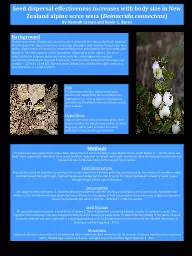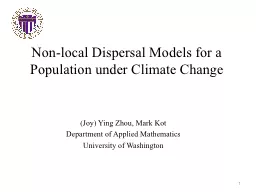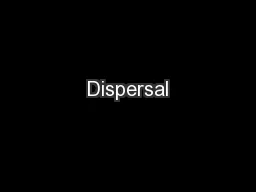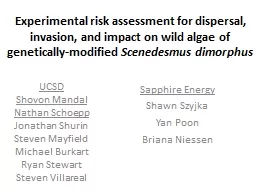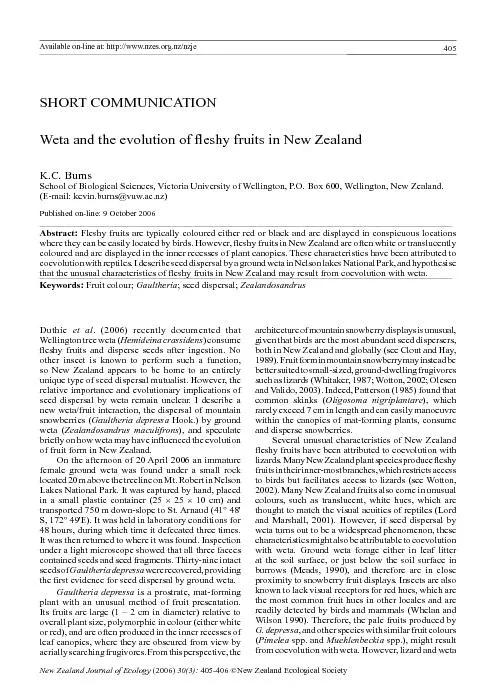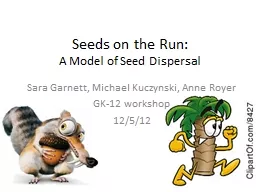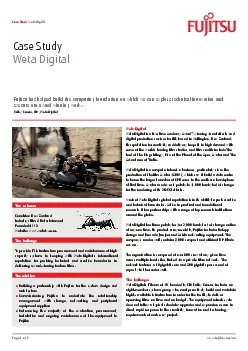PPT-Seed dispersal effectiveness increases with body size in New Zealand alpine scree weta
Author : finestlaxr | Published Date : 2020-07-02
Deinacrida connectens By Hannah Larsen and Kevin C Burns Background Alpine scree wetas Deinacrida connectens live above the tree line in the South Island of
Presentation Embed Code
Download Presentation
Download Presentation The PPT/PDF document "Seed dispersal effectiveness increases w..." is the property of its rightful owner. Permission is granted to download and print the materials on this website for personal, non-commercial use only, and to display it on your personal computer provided you do not modify the materials and that you retain all copyright notices contained in the materials. By downloading content from our website, you accept the terms of this agreement.
Seed dispersal effectiveness increases with body size in New Zealand alpine scree weta: Transcript
Download Rules Of Document
"Seed dispersal effectiveness increases with body size in New Zealand alpine scree weta"The content belongs to its owner. You may download and print it for personal use, without modification, and keep all copyright notices. By downloading, you agree to these terms.
Related Documents

